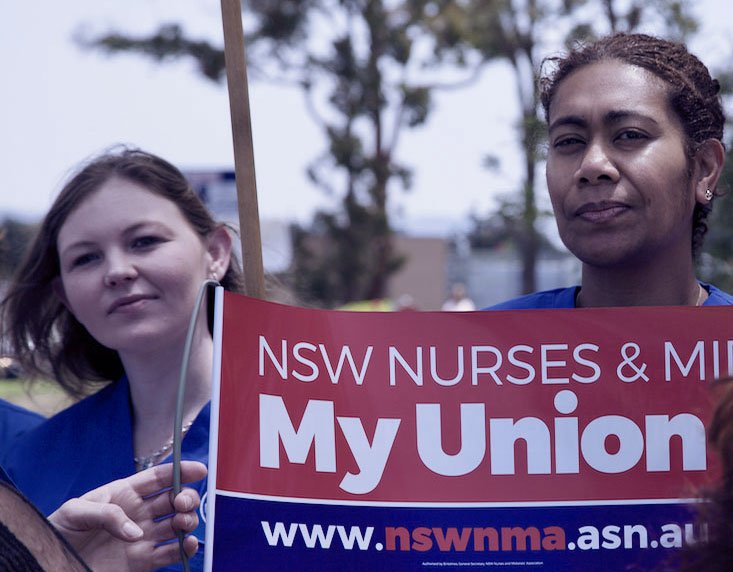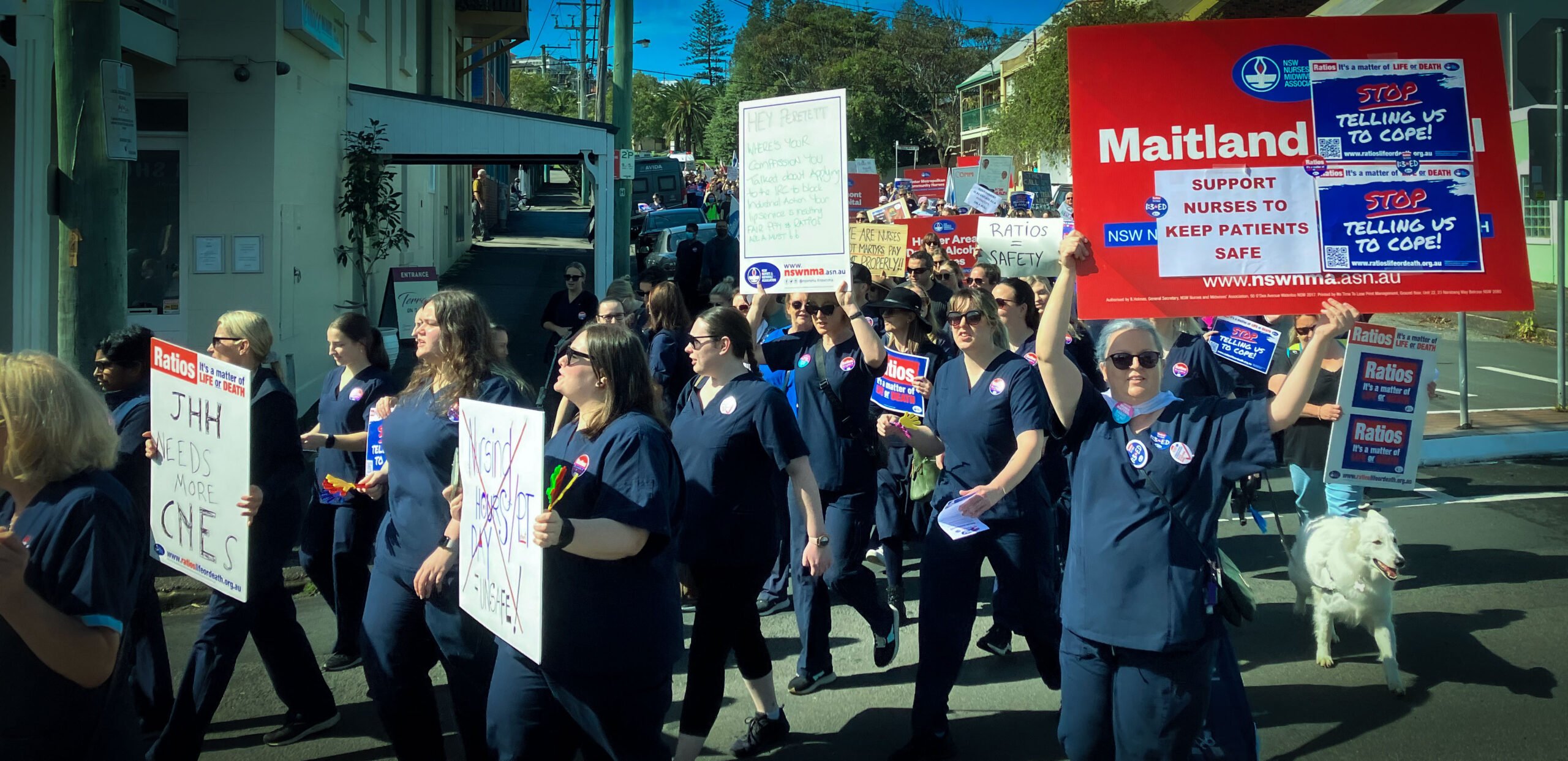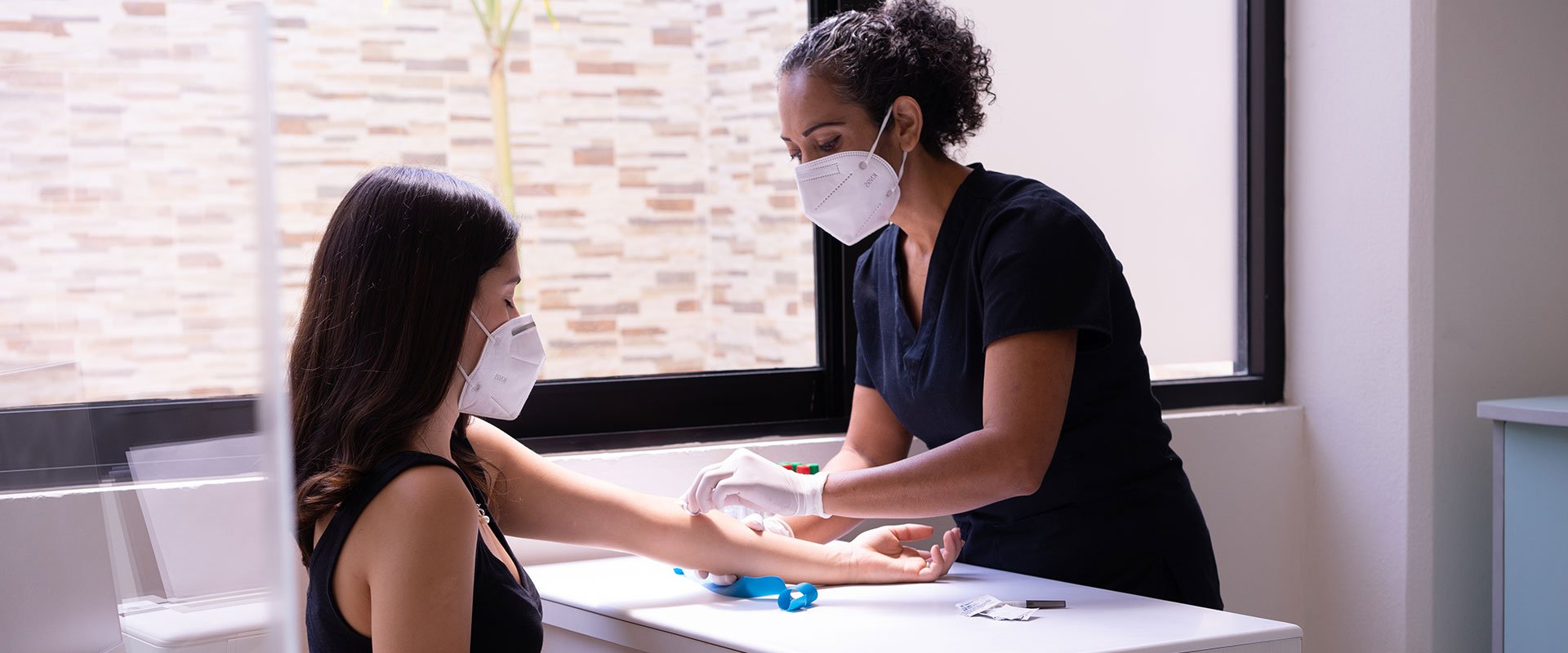Nurses and midwives around the state are to start voting on their staff ratios and wages claim next week. NSW still doesn’t guarantee safe nursing levels for seriously ill children, emergency departments or rural hospitals.
NSW Nurses and Midwives Association (NSWNMA) branches at public hospitals and community healthcare centres around NSW will start voting next week on a proposed staff ratios and wages claim, which challenges the O’Farrell Government to build on the safer hospital staffing levels first introduced in 2011 under an agreement between the NSWNMA and previous Labor government.
A key feature of the claim is guaranteed, safer nursing levels for seriously ill children, emergency departments and rural hospitals and multipurpose services, and safer nursing and midwifery staffing arrangements in community health services.
The claim also includes two 2.5 per cent per year payrises, which will provide the majority of experienced, full-time nurses and midwives with a payrise of more than $70 per week, or more than $3800 per year, by July 2014.
267 NSWNMA branches, representing more than 33,000 public-sector nurses and midwives throughout NSW, are eligible to vote. Voting will start next Monday, 18 February, and finish two weeks later, at 4.00pm Friday, 1 March. Claim information and branch voting kits were sent to branch officials this afternoon, 11 February.
If approved by a majority of the branch vote the NSWNMA will then seek to have the claim incorporated into the new Public Health System Nurses & Midwives (State) Award, which replaces the current award when it expires on June 30 this year.
The first television advertising in support of the claim is already underway around the State.
Historical background
The current award, which was finalised in February 2011, included the first stage of a major reform of staffing arrangements in NSW public hospitals. This reform included compulsory, minimum nursing ratios (or nursing hours per patient per day) for most wards in the State’s acute hospitals.
It resulted in medical/surgical patients in Group A (Principal Referral) hospitals being entitled to, on average, six hours of nursing per day, Group B (Major Metro and Regional) hospitals 5.5 nursing hours per day and Group C (District) hospitals five nursing hours per day.
In terms of maternity/birthing facilities, the former government also agreed to adopt Birthrate Plus as the staffing model for Midwifery Services. Birthrate Plus is the generally accepted staffing ratio model for births per midwife in the UK and has been adapted for the NSW environment.
These improvements in nursing and midwifery hours, and the resultant ratios that were delivered, required the employment of an additional 1580 full-time-equivalent nurses and midwives over the last two years and delivered ratios that were close to the claims for one nurse to four patients made by the NSWNMA in 2010-11 for the Group A and Group B hospitals. Rehabilitation, palliative care and inpatient acute mental health wards also received nurse to patient ratios via improved mandatory nursing hours per patient.
The O’Farrell Government, which came to office shortly after the finalisation of this historic staffing agreement, has regularly praised and claimed credit for the employment of these extra nurses and midwives.
The 2013 claim
The 2013 ratios and wages claim, about to be considered by NSWNMA branches around the State, was compiled after extensive research into the views, experiences and priorities of NSWNMA members, research into the working conditions and staffing levels currently operating in hospital wards and community health facilities that do not yet have ratios and lengthy discussion within the NSWNMA’s log of claims committee, which contains rank-and-file members from most areas of nursing and midwifery.
a) Pay
The claim seeks a 2.5 per cent annual payrise, without trade offs, in July 2013 and then another 2.5 per cent rise, also without trade offs, in July 2014.
b) Extension of staffing ratios
Key features of this claim, with regard to nurse and midwife staffing, include:
- applying compulsory minimum ratios in all hospitals, including smaller rural hospitals and multipurpose services (MPSs), to the same level as Group A (principal referral) hospitals such as Westmead, Royal North Shore and Wollongong hospitals;
- introducing compulsory minimum ratios to children’s hospitals, wards, neo-natal intensive care units and paediatric critical care units;
- introducing ratios to emergency departments, medical assessment units, emergency medical units and adult critical care units;
- introducing mandated face-to-face patient/client time in community nursing; and
- extending ratios to more mental health units and improving ratios in mental health hospitals.
(Newsrooms please note: To assist you with interpreting your local circumstances more detailed information, on the safer ratios being sought, can be found in the attached table.)
Comment
NSWNMA general secretary, Brett Holmes, said the introduction of safer staffing arrangements in NSW hospitals and community health services was always going to be done over time.
“Nurses and midwives working under the first round of compulsory, minimum ratios are clear they have provided a safer clinical and less stressed working environment. The challenge for the O’Farrell Government is to build on this and ensure every public patient in NSW has access to the same level of safer care.
“After all, the O’Farrell Government is very willing to take credit every time a new batch of nurses or midwives is employed to fill the new positions created by the ratios, which were actually agreed between the NSWNMA and previous Labor government. It will be interesting to see how it reacts now that it has a chance to act in its own right and extend this reform into other important areas such as children’s wards and rural facilities.
“Many people would be surprised and shocked to know that minimum staffing levels are currently not guaranteed in NSW hospitals for seriously ill infants and children. No right-thinking person could think that state of affairs should continue.
“And what about emergency departments and other high pressure areas such as intensive care units? They also don’t have guaranteed minimum staffing levels at the moment. Things usually work okay, because hardworking and responsible clinicians ensure they do. But to continue leaving it to chance is not acceptable. Minimum safe staffing must be guaranteed and enforceable.
“It is also now time to guarantee safer staffing levels in the State’s smaller country hospitals and multipurpose services. I grew up in the country myself and have strong personal feelings, as well as professional views about this. Rural people, who do not have immediate access to the major hospitals and all the bells and whistles that go with them, are at least entitled to the same guaranteed nursing and midwifery ratios as the big Sydney hospitals. In fact, because these hospitals don’t have the same level of other resources as the larger hospitals, there is an even stronger case for them having guaranteed safer staffing resources to compensate.
“Finally, governments and health administrators are always going on about the importance of primary health care and doing more to keep people out of hospital and minimising unnecessary hospital admissions. Community health services, including community mental health services, are vital to achieving this goal. However, they can’t do it if nurses and midwives are stretched to the limit. That is why it is now also time to introduce stricter, enforceable staffing arrangements in community health services, which include a reasonable balance between face-to-face patient or client time and the time required for things like travel, research and administration.
“As for the pay rise claim, it will maintain the position of nursing and midwifery in relation to similar professions, as we prioritise this important staffing reform at this time. We now await the verdict of our members,” Mr Holmes said.
Southern NSW branch voting
Northern NSW branch voting
Murrumbidgee branch voting
Mid North Coast branch voting
Illawarra branch voting
Western NSW branch voting
Central Coast branch voting
Far West branch voting
Hunter New England branch voting
Sydney Suburban branch voting
Contact details
John Moran Media Liaison
Ph: 8595-1234







